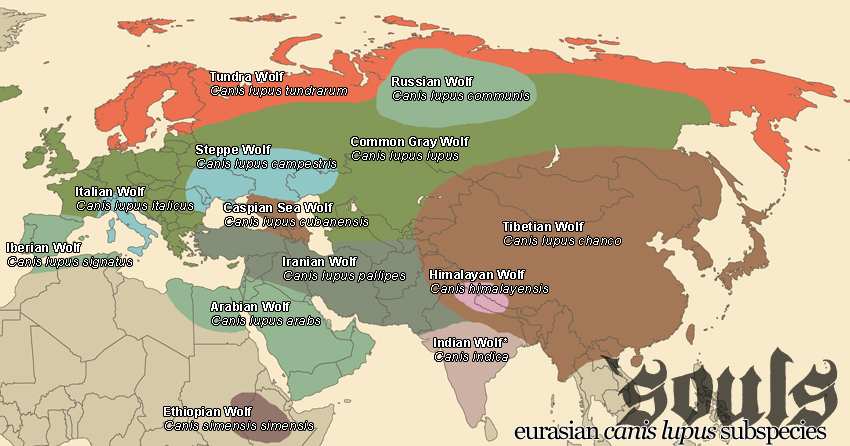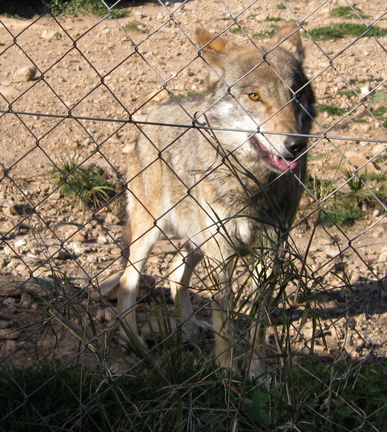Steppe Wolf (''Canis lupus campestris'')
See our RP Guide for more extensive information regarding wolves.
On this page... (hide)
- 1. Common Names
- 2. 'Souls Range
- 3. Appearance
- 4. Other Characteristics
- 4.1 Social Life
- 4.2 Survival
- 4.3 Luperci
- 5. Citations
1. Common Names
Steppe Wolf
2. 'Souls Range
The Steppe Wolf (Canis lupus campestris) is a subspecies of grey wolf native to the pri-Caspian steppes, the steppe regions of the Caucasus, the lower Volga region, southern Kazakhstan north to the middle of the Emba, the northern pri-Urals, and the steppe regions of the lower European part of the former Soviet Union. It may also occur in northern Afghanistan and Iran and occasionally the steppe regions of Romania and Hungary.
3. Appearance
Canis lupus campestris, from dirkhartung@flickr
The Steppe Wolf is of medium-average dimensions builds, weighing 77 - 88 lbs (35 - 40 kg), typically averaging smaller than the Common Gray Wolf. Its fur is also comparatively sparser, coarser and shorter, with a poorly furred tail. The flanks are light grey, and the back is warm, nearly reddish gray or brown with strong highlights consisting of black hairs. The fur of steppe wolves in Middle Asia and Kazakhstan tends to have more reddish tones than other populations.
4. Other Characteristics
4.1 Social Life
Steppe Wolves tend to keep smaller packs than many other wolves; they typically work in groups of around ten individuals, almost always a closely-related family rather than a band of stragglers. Steppe Wolves were not nomadic prior to the advent of Luperci-ism in Europe and Asia; however, interaction with Common Golden Jackals also occupying similar ranges revealed to the typical Steppe Wolf the advantages of such a lifestyle. As a result, many took to traveling outside of their home range and throughout southern Asia and into southern Europe.
4.2 Survival
Steppe Wolves were rather common prior to the extinction of humanity, and their survival translated well to post-apocalyptic times. They were quick to inherit human ways of life from their jackal neighbors as well as the ability to shift from European wolves. These wolves are responsible for transferring Luperci traits to much of Asia thanks to their newly acquired semi-nomadic nature.
4.3 Luperci
Steppe Wolves are almost universally Luperci; their central location in Asia made them an early adopter of not only the virus but also various human technologies. Steppe Wolves are very often merchants, traveling to trade their goods in various parts of the world. This requires heavy use of the Luperci form as well as knowledge of the human lifestyle, and Steppe Wolves are arguably the most adaptive in regards to the new form of civilization.
5. Citations


